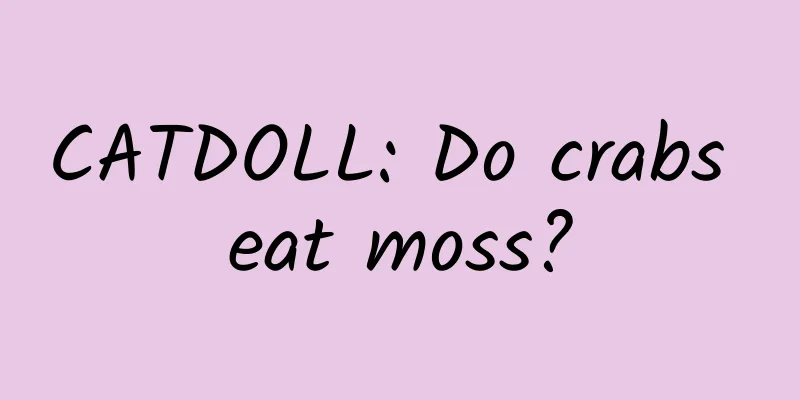CATDOLL : CATDOLL: How to raise sea bass without killing them

|
To successfully farm sea bass, you must first prepare a growth environment that sea bass likes. Sea bass likes to live in brackish water at the estuary, but can also live in fresh water. Secondly, you must prepare food that sea bass likes to eat, such as fish, shrimp, etc. Finally, you must do a good job of daily farming management, so that the productivity of sea bass can be greatly improved. The farming techniques are as follows: 1. Breeding technology 1. Freshwater aquaculture Pond construction: Choose a place with abundant water resources, fresh water and no pollution to build the pond. Each pond is 5 to 8 mu, rectangular, and preferably oriented north-south. The pond bottom is required to be flat, sandy and muddy, with a firm bank and a depth of 2 meters. Inlet and outlet pipes should be buried at the bottom of the pond. At the same time, 1 to 2 1.5KW aerators should be equipped, and the farm should have a power generation standby unit. Before stocking, the pond should be desilted and disinfected. One week before stocking, 50 kg of quicklime or 5-10 kg of bleaching powder can be sprayed on the dry pond for disinfection. Before stocking, fertilize and cultivate the basic bait of the pond water to make the pond water oily green or tea brown. 2. Marine aquaculture The pond area should be 3300-66000 square meters, with a water depth of more than 2 meters, sufficient water source, no pollution, good water inlet and outlet facilities, and convenient transportation. Before stocking, the pond needs to be dried, silted, and slopes leveled. Use 750-1050 kg of quicklime per hectare, keep the pond water 10-20 cm, and sprinkle with slurry. After 7 days, add water to a depth of 1 meter. In order to keep the water quality in good condition, 75 kg/hO of diammonium can be applied once. After two days, the pond water turns oily green and stocking can be carried out. 2. Seedling cultivation 1. Freshwater seedlings The perch fry (body length 1.5-2 cm) caught from the sea area must be diluted to a salinity of 4-7‰ before being put into the temporary holding pond (salinity 1‰). The best stocking species are the natural perch fry from the northern sea area. Due to different physical and chemical factors, the fry grows fast and is large in size, which can shorten the breeding cycle and increase economic benefits. The stocking density of the temporary holding pond is controlled at 10,000 to 20,000 per mu, and the pond should be frequently flushed and oxygenated. On the second day after being put into the pond, fresh baits such as zooplankton and bloodworms were fed, and fish paste, floating pellets and mixed baits were gradually mixed and fed, and the fish were gradually acclimated to the feeding of minced fish paste and floating pellet feeds. The daily feeding amount was 15% of the fish body weight, and it was fed in 3 times. During the temporary rearing period, 0.3ppm strong chloramine or 15ppm formalin is sprayed and disinfected once a week. Three days before feeding, 0.5g of furazolidone, 3g of oxytetracycline, and 1g of vitamin C are taken orally for every 50kg of fish. Mix them with the feed and feed them once a day for three consecutive days. After more than 20 days of rearing, the fish can be raised in large ponds when they grow to 4-6cm. 2. Seawater seedlings Sea bass fry are currently mostly caught at sea. In spring, the sea bass fry are about 2.5 to 4 cm in size. After the fishing and transportation operation, the fish will be injured to varying degrees. In order to improve the survival rate of breeding, they can be temporarily raised first. It is more convenient to set up a 40-mesh cage in the breeding pond. 2000-3000 fry are temporarily raised per cubic meter of water, and 1×10-6-2×10-6 chloramphenicol is sprayed for disinfection. After feeding the fish paste, furazolidone is added. Artemia larvae or marine and freshwater hornworms and copepods are fed for the first 10 days, and then fresh fish paste is fed. When the fish fingers are cultured to about 10cm, 1.5 fish/O are put into the growth pond. Additional information Sea bass is sweet and mild in nature. It can nourish the liver and kidney, strengthen the spleen and stomach, and relieve phlegm and cough. It has a very good tonic effect for people with weak spleen and stomach and poor digestion. It starts to grow fat in autumn, and the nutrients accumulated in the body are the richest in late autumn and early winter. In addition, sea bass has the following five nutritional benefits 1. Sea bass has the effect of curing indigestion: 1 sea bass, remove the internal organs and scales, add onions and ginger, fry for a long time until it is very cooked, eat the meat and drink the soup. 1 time a day. 2. The effect of sea bass in treating malnutrition and emaciation in children: 50 grams of fresh sea bass meat, 20 grams of oysters, and 10 grams of tangerine peel, cook them together into soup and drink. 3. Sea bass has the effect of treating spleen deficiency, diarrhea and chronic stomach pain: 50 grams of sea bass meat, 15 grams of white atractylodes, and 10 grams of tangerine peel, cook them together into soup and eat. 4. To treat difficult wound healing after surgery, edema during pregnancy, and fetal movement disorder: 1 seabass, remove the scales, gills and intestines, 40 grams of Astragalus membranaceus, appropriate amounts of salt and water, steam them together and eat. 5. Sea bass can cure whooping cough in children: dry the sea bass gills without washing them, and then decoct them in water; or roast them until they are yellow, grind them into powder, and take them with boiled water. Use one gill each time, twice a day. Reference source: Baidu Encyclopedia - Perch Reference source: People's Daily Online - Sea bass is the first choice for autumn tonic. The editor teaches you the secret of eating sea bass Bass is a typical carnivorous fish with a varied diet. It likes to eat anything that lives in the water, whether it is a small loach, shrimp, small fish, sandworm or squid. It is ferocious and greedy. Because of its greed, it does not hesitate or doubt when biting the hook. When it finds bait to eat, it rushes up and swallows it in big mouthfuls, so it is relatively easy to fish. Properly controlling the amount of feed is conducive to reducing costs, reducing the occurrence of gastrointestinal diseases and water pollution. In case of high temperature or weather changes, the amount of feed should be appropriately reduced. At each feeding, attention should be paid to observing the feeding and health status of the fish so that emergency measures can be taken in time. Sea bass can feed and grow normally when the water temperature is above 14℃. It can naturally overwinter in this area, which is conducive to breeding and becoming large-sized commercial fish for balanced listing in the next year. Bass can grow in fresh water, but according to its natural habits, it is better to choose brackish waters with sea tides for breeding, especially in fisheries and reclamation areas at river mouths. The salinity of water should be below 5‰. The growth rate of breeding in waters with too high salinity is slow. In addition, the breeding water quality requires freshness and sufficient dissolved oxygen. Additional information: Seabass is a warm-water near-shore mid-bottom layer fish, with a wide range of salt adaptability, good at living in the brackish and freshwater areas of estuaries, and can also swim upstream to freshwater, often forming small groups and moving near the coast and certain deep water areas with seasonal changes. In spring and summer, it is active in shallow waters and estuaries with a depth of less than 20 meters, and in winter it swims back to deeper sea areas to spawn and hibernate. The sea bass is distributed along the coast of my country and has abundant resources. Sea bass is a ferocious carnivorous fish. It feeds on small fish and shrimps naturally, and is mainly cultivated with high-grade expanded feed. Sea bass has the characteristics of fast growth, wide adaptability, and strong disease resistance. Reference source: Baidu Encyclopedia - Perch Bass mostly lives near the mouth of rivers and streams near the coast. It is a brackish and freshwater fish. The fish is very large, with the largest one weighing more than 20 kilograms. The fish has a large egg-carrying capacity, and some parent fish can carry more than 100 million eggs. Bass is a typical carnivorous fish with a varied diet. It likes to eat anything that lives in the water, whether it is a small loach, shrimp, small fish, sandworm or squid. It is ferocious and greedy. Because of its greed, it does not hesitate or doubt when biting the hook. When it finds bait to eat, it rushes up and swallows it in big mouthfuls, so it is relatively easy to fish. The meat of sea bass is tender and plump, with few bones and no fishy smell. It is a precious edible fish and restaurants serve it as a high-end dish. Sea bass, also known as spotted sea bass and seven-star sea bass, belongs to the order Perciformes and family Liparidae in taxonomy. It is also called sea bass because it breeds and grows along the coast, unlike the California sea bass and sweet-scented perch that grow in freshwater. Sea bass is one of the four famous fish in the Xijiang River, including sea bass, croaker, mandarin fish and bream. It has firm and delicious meat and rich nutrition. Every 100 grams of fish contains 17.5 grams of protein, 3.1 grams of fat and multiple vitamins. 1. Living habits and growth conditions of sea bass Perch live in shallow sea estuaries and are suitable for wide salt. The fry are hatched in seawater with a salinity of about 22‰, and then swim upstream to the estuary where salt and fresh water meet. They can enter fresh water to forage and grow, but most adult fish live in salt and fresh water. Perch is a ferocious carnivorous fish with a large appetite. The food intake can reach 5% to 12% of its body weight at a time. The predation intensity is the strongest in spring and summer. The fry use copepods and mysid shrimp as bait, and when they grow to 10 cm in length, they prey on small fish and shrimp. Perch grows quickly. The breeding period is generally from November to January of the following year. The fry grows to 25 cm in length and weighs 0.5 catties by the end of the year. The 6-year-old fish can reach 0.8 meters in length. The largest individual can reach 1 meter in length and weigh 15 to 20 kilograms. Artificially cultivated perch grows faster, usually reaching more than one catty in 280 days of cultivation. Perch can forage and grow normally when the water temperature is above 14℃, and can naturally overwinter in this area. Bass can grow in fresh water, but according to its natural habits, it is better to choose brackish water areas reached by tides. Fish at river mouths and reclaimed areas are the best. The water salinity can be below 5‰. The growth rate will be slow if it is farmed in waters with too high salinity. 2. Activities and foraging of sea bass 1. Although bass have the habit of jumping and dancing in the process of fighting, it is limited to within 10 feet of the shore, and the jump is even more powerful when seeing people. However, more than 10 feet away, it will sink desperately after being hooked, and it is the kind of long air bag. At this time, it is recommended to hold the fishing rod high to prevent it from running into the fishing range of others. In addition to avoiding the entanglement of the fishing line of the neighboring angler, you can also know exactly where it slips away. 2. Although the skin of the bass' mouth is weak, it is very resilient, and it is rare for the hook to "cut" the skin and cause the fish to escape. Moreover, its gill cover is soft and slippery, so you may want to hold the fishing rod high for a long time and force it to perform a diving action. This action does not help it to break free from the hook, but will make it dive into the water for a long time, which is very risky. 3. In addition to its fast diving and diving speed, perch also has the habit of sprinting to the left and right. 4. Bass are very gentle when taking bait. If the main line is not tightened when assembling the hook, it is difficult to detect the fish. 5. The general way for bass to take bait is to flick it frequently. Whether it is a five-hook fishing rig or a double-hook fishing rig, you need to increase your mental concentration and grasp the opportunity to fish at any time, while avoiding having your fishing rod pulled away by the bass. 6. Bass live in groups. If you see bass jumping into the water or chasing food at the same spot, it means there is a group of bass here, not just one. The length of perch can reach 60 centimeters. It is ferocious and carnivorous. There are many varieties. It is distributed along the coast of my country and in the estuaries of rivers and seas. In recent years, my country has introduced California perch (referred to as California perch) from the United States to breed in coastal and southeastern provinces. This perch is omnivorous, grows fast, has few diseases, is highly adaptable, and is very easy to catch. It has become one of the main target fish for fishing in coastal and inland my country. Fishing for perch in coastal areas and estuaries can be done by hand fishing, hand rod fishing, or casting rod fishing. When hand fishing on a boat, you can pull the line up and down at a depth of 20 to 60 meters to lure the perch to take the bait. Once you feel that the hand feels heavy, you can pull it up suddenly to make the hook pierce the fish's mouth, and then slowly pull the line up. If you feel that the struggle is strong, you can slowly release the line, but do not let it go suddenly. The line is generally 5 to 6, the hook is 7 to 10, and the bottom weight is used, with 3 to 5 hooks hanging. The bait is sandworms, white shrimps, and small fish for good results. When fishing with a hand pole on a boat, you should lift and release the pole, just like hand fishing. Since the pole is short and the line is long, if there is no release device, you still need to lift the line by hand after you catch the fish. It should be noted that the line should not be tangled during the lifting process, so that it will be convenient and time-saving when you fish again, and the line will not be damaged and the fish will escape. In contrast, it is of course best to use a casting rod to fish for bass, and a long casting rod of more than 3.6 meters and a grape hook will have the best effect. Since there are large bass weighing 40~50 kilograms in the sea, it is difficult to adapt to hand fishing or hand pole fishing, and it is easy to cause the danger of dragging people into the water. Casting rods have long lines and can be reeled in and released, which is much safer. As for local bass and California bass in coastal and inland artificial breeding waters, due to annual pond cleaning, the largest individual does not exceed 2~4 thousand, and is generally 1~2 kilograms. Therefore, you can use a hand pole or a casting rod. Hanging fishing and trolling fishing are especially good. The bait is mainly meat bait. 1. What are the general characteristics and living habits of perch? Perch, also known as flower perch and seven-star perch, has a long and flat body, a pointed snout, a large mouth, a gray-green back, and a silvery white belly. There are several black spots on the upper dorsal side and the belly of the dorsal fin. Perch is a warm-water near-shore mid- and lower-layer fish. It is widely adaptable to salt and is good at living in the brackish and freshwater areas of estuaries. It can also go upstream to freshwater and often forms small groups to move around near the coast and certain deep water areas with seasonal changes. In spring and summer, it is active in shallow waters and estuaries with a depth of less than 20 meters. In winter, it swims back to deeper sea areas to spawn and hibernate. It is distributed along the coast of my country and has abundant resources. Perch is a ferocious carnivorous fish. It naturally feeds on small fish and shrimps. Artificial breeding mainly uses high-grade expanded feed. Perch has the characteristics of fast growth, wide adaptability, and strong disease resistance. 2. What work should be done before stocking perch? There are two main aspects of work: one is the selection of ponds and pond cleaning and disinfection; the other is to prepare the fish species for stocking. Let's talk about the selection of ponds and pond cleaning and disinfection first: the pond is generally required to be rectangular, east-west, with an area of 5-8 mu and a water depth of more than 2 meters. The pond bottom is required to be flat, sandy and muddy, the bank is firm, the water source is sufficient, the water quality is pollution-free, and there are good water inlet and outlet facilities. The pond must be dried, silted and exposed to the sun. Disinfection is carried out once half a month before stocking, and 75 kg of quicklime is applied per mu or 20 mg/L bleaching powder is used for disinfection with water. After 7 days, water is added to a depth of 1m. In order to keep the water quality good and fertile, the basic bait for cultivating the pond water should be fertilized before stocking, so that the pond water is oily green or tea brown. At the same time, 1 to 2 1.5KW aerators are equipped, and the farm must also be equipped with power generation equipment. Of course, it is necessary to prepare fish species to carry out breeding. The stocked fish species are required to have neat specifications, smooth body surface, strong and lively body, complete scales and fins, no injuries, and no diseases; Third, how to cultivate perch fish species? At present, most sea bass seedlings are directly caught along the coast. When caught, the body length of the seedlings is generally 1.5 to 2 cm. Due to different physical and chemical factors, the sea-caught seedlings grow fast and are large in size, which can shorten the breeding cycle. After the seedlings are caught, they must be desalinated and cultivated. When the salinity is below 1‰, they can be transported to freshwater areas for special pond cultivation. The special pond cultivation method mainly involves setting up cages in the breeding pond. 2000-3000 seedlings are temporarily raised per cubic meter of water. On the second day after the seedlings are released, they are fed with fresh baits such as zooplankton and bloodworms. Slowly mix fish paste, floating granular compound feed with fresh bait and feed them, and gradually acclimate them to feed with crushed fish paste and floating granular feed. After more than 20 days of feeding and training and cultivation, large-sized fish with a size of more than 5 cm can be obtained. 4. What are the requirements for stocking fish species? The stocking of perch is generally carried out in mid-to-late April, with a stocking density of 1,200 fish of 5-6 cm per mu, and 50 silver carp and 30 bighead carp of 50 grams per mu. Before stocking, they are washed and disinfected with 3% salt water or 20 mg/L potassium permanganate. 5. What is the source of perch feed and feeding technology? The feed of perch is mainly artificial compound feed, and small fish can also be fed appropriately. Perch grabs food quickly and has a large content. It is very important to feed it at a fixed time and quantity. Therefore, it is necessary to do a good job of attracting food at a fixed point, with the purpose of slowly attracting the fish to a fixed place to eat. After about 15 days, the fish can be basically domesticated and then start feeding normally. When feeding, we should follow the principle of "slow-fast-slow, little-more-little". Each time we feed, we should first feed a little to attract the fish to float up to grab food, then increase the feeding amount. When the fish sink and do not grab food, we should stop feeding. Feeding should be done at a fixed point, at a fixed time and at a fixed quantity. Generally, we feed twice a day, at 6-7 in the morning and 6-7 in the evening. It is advisable to feed until 80% full at each meal. The feeding amount varies according to the season. In the suitable temperature season for the rapid growth of perch, the feeding amount is 10-15% of the fish's body weight. In the early spring and late autumn with low temperature, it accounts for 1-10% of the fish's body weight. Proper control of the feeding amount is conducive to reducing costs, reducing the occurrence of gastrointestinal diseases and water pollution. In case of high temperature and weather changes, the feeding amount should be appropriately reduced. Each time we feed, we should pay attention to the eating and health status of the fish so as to take emergency measures in time. 6. How to adjust the water quality during the breeding process? For perch pond farming, that is, high-density farming, it is very important to keep the water fresh and the dissolved oxygen sufficient. The main methods are: First, change the water frequently. In the early period of April to June, in order to increase the water temperature, the water depth can be kept at 1.2 meters, and the water can be changed every 10 to 15 days, and the water can be changed by 15 cm each time, and the transparency can be kept above 25 cm; from July to September, the water depth can be kept at 2 meters, and the water can be changed every 7 to 10 days, and the transparency can be kept above 30 cm. Second, frequent oxygenation, the aerator can be properly turned on during the fry period, and the aerator can be turned on for 1-2 hours at noon on sunny days, and the aerator can be turned on at night or in the early morning on rainy days or thunderstorms to prevent the floating head from flooding the pond, especially in hot weather and the late stage of farming, the aerator should be turned on frequently to keep the dissolved oxygen in the pond water sufficient; third, the application of biological agents, high-density farming brings a large amount of residual bait and excrement at the bottom of the pond, the concentration of harmful substances is high, and a large amount of oxygen in the water is consumed, especially in hot weather. The appropriate application of biological agents can effectively degrade ammonia nitrogen and nitrite and maintain good water quality. 7. What else does daily management include? Daily management also includes the following two aspects. First, disinfection and pest control are done well. Generally, disinfection is done once every 15 days, depending on the fish's feeding situation. Second, pond inspection, morning and evening inspection, and timely handling of abnormalities. The content of pond inspection includes fish activity, feeding situation, changes in pond water color and transparency, and pond escape prevention facilities and enemies. At night, especially in the second half of the night, the operation of the aerator should be inspected. 8. What are the common diseases of sea bass? How to prevent and control? The general principle for fish diseases is prevention first, combined with prevention and control. Disinfection and pest control should be done regularly. Common diseases of sea bass are mainly the following: 1. White candle disease of the eyeball: white spots appear in the eyeball, gradually expanding to cover the entire eyeball, and in severe cases, the eyeball protrudes and falls off. It is more common in the spring and summer fish species stage. This disease can be caused by stale feed and vitamin deficiency. Prevention and control methods: renew the aquaculture water, feed fresh feed, and add vitamins (especially VB) to the feed. 2. Enteritis: The abdomen of the sick fish is swollen, the anus is red and swollen, and yellowish mucus flows out when the abdomen is squeezed. The main reason is feeding spoiled feed or overfeeding. Treatment method: Reduce the feed first (it is best to stop feeding for one meal) during treatment, and feed it with broad-spectrum antibiotics for 3 to 5 days, which can generally cure the disease. 3: Hemorrhagic disease: The base of the pectoral fin and dorsal fin of the sick fish is red, swollen and congested, the sick fish moves slowly, and the food intake decreases. This disease is a viral infection and is highly contagious. For treatment, you can use a mixture of virus and norfloxacin to mix and feed it for 6 consecutive days. At the same time, spray the pond with strong chlorine once a day for 3 consecutive days. 4: Saprolegniasis: This disease often occurs in winter and spring when the water temperature is low. The wounds on the surface of the sick fish are attached with grayish-white cotton-like mycelium, and the fish is weak and slowly dies. After infection, it spreads quickly. This disease is easy to occur under specific conditions. Changing the pond water environment and keeping the fish nutritious to improve disease resistance are the most effective control measures. 5: Parasitic diseases: This disease is mainly caused by parasites such as wheelworms, oblique tubeworms, and polycystic ovary syndrome. Symptoms include weight loss, black body color, and erosion at the mouth end, which can occur all year round. Prevention often uses water changes to improve water quality. Treatment can be done by evenly spraying 0.7-1 mg/L of copper sulfate and ferrous sulfate mixture (5:2) throughout the pond, or spraying 20-25 mg/L of formalin throughout the pond. Generally, parasites are prone to secondary bacterial infections, so disinfection is generally required after killing insects. 6: Hepatobiliary syndrome: The main manifestations are reduced food intake, gradual swimming of fish, and unexplained deaths. The main reasons are that drugs are frequently applied under high-density breeding, and toxic and harmful substances in the water are chronically accumulated in the fish, leading to organ dysfunction and tissue damage in the fish; the second is long-term overfeeding, and long-term overload of the fish liver, resulting in metabolic disorders or even metabolic disorders. The main methods of prevention and control are to regulate the water environment, feed scientifically, and regularly mix some liver-soothing and bile-promoting Chinese herbal medicines with feed for feeding, which has a certain preventive effect. |
<<: CATDOLL: How to breed springtails for feeding fish? Simple breeding method?
Recommend
CATDOLL: What is the best thing to feed the golden coin turtle?
Golden coin turtles are omnivorous turtles. In na...
CATDOLL: Who knows what flies eat? I only saw them landing on food but I didn't see them eating.
Who knows what flies eat? I only saw them landing...
CATDOLL: How to order Liaoning Hongtai veterinary drugs? Quick and convenient ordering method sharing
Learn about Liaoning Hongtai Veterinary Medicine ...
CATDOLL: When did people invent sericulture and silk reeling? (When did people invent sericulture and silk reeling?)
1. The founder of sericulture and silk reeling? L...
CATDOLL: What are the main differences between silver carp and bighead carp?
1. Different families Silver carp is also called ...
CATDOLL: Which book is the story of Firefly from? (Which book is the story of Firefly from?)
1. Where does the flickering light come from? Thi...
CATDOLL: Food safety issues that cannot be ignored: the relationship between pork and intestinal bleeding
Food safety issues of pork Pork is one of the com...
CATDOLL: What kind of snail is this? I picked it up on the roadside after the rain. Can I keep it?
What kind of snail is this? I picked it up on the...
CATDOLL: Do red worms need oxygen or oxygen? (Do red worms need oxygen or oxygen?)
1. How to breed red worm feed? 1. In the process ...
CATDOLL: How many years does it take for a cicada to emerge from the soil? (How many years does it take for a cicada to emerge from the soil?)
1. How many years does a cicada have to stay in t...
CATDOLL: Recipes and tips for making high-quality pheasant feed
Importance of Pheasant Feed The rational formulat...
CATDOLL: How to farm eels
How to farm eels Yellow eel, also known as long f...
CATDOLL: According to legend, who invented the art of raising silkworms and reeling silk? (According to legend, who invented the art of raising silkworms and reeling silk?)
1. The founder of sericulture and silk reeling? L...
CATDOLL: Where is it easiest to find snails? (Will snails recognize their owners after being kept for a long time?)
1. Is it easy to find snails near a stream? Good....
CATDOLL: How much is a grasshopper? (How much is a grasshopper? How much is a stool?)
1. How much does a pound of wild grasshoppers wei...









